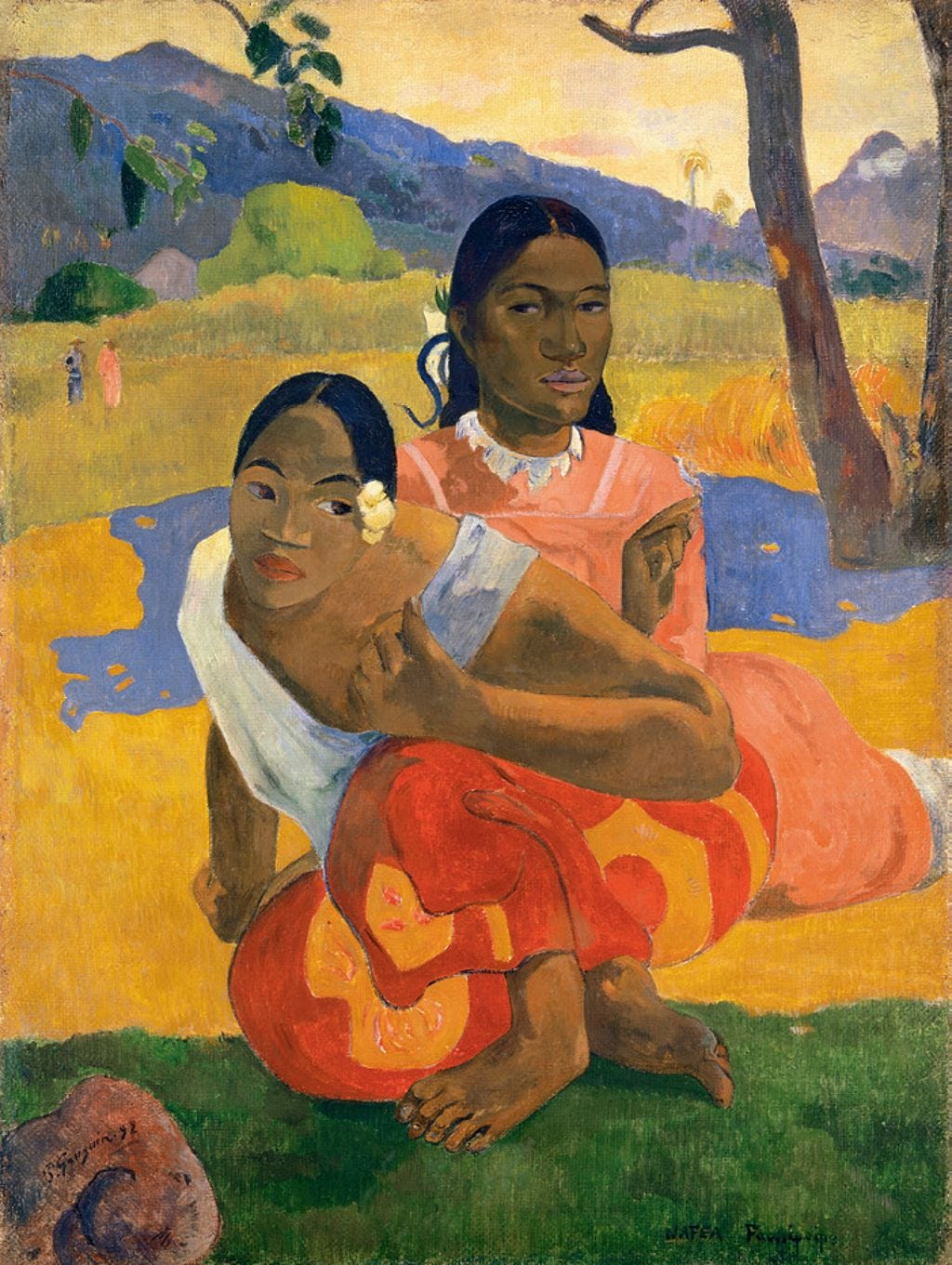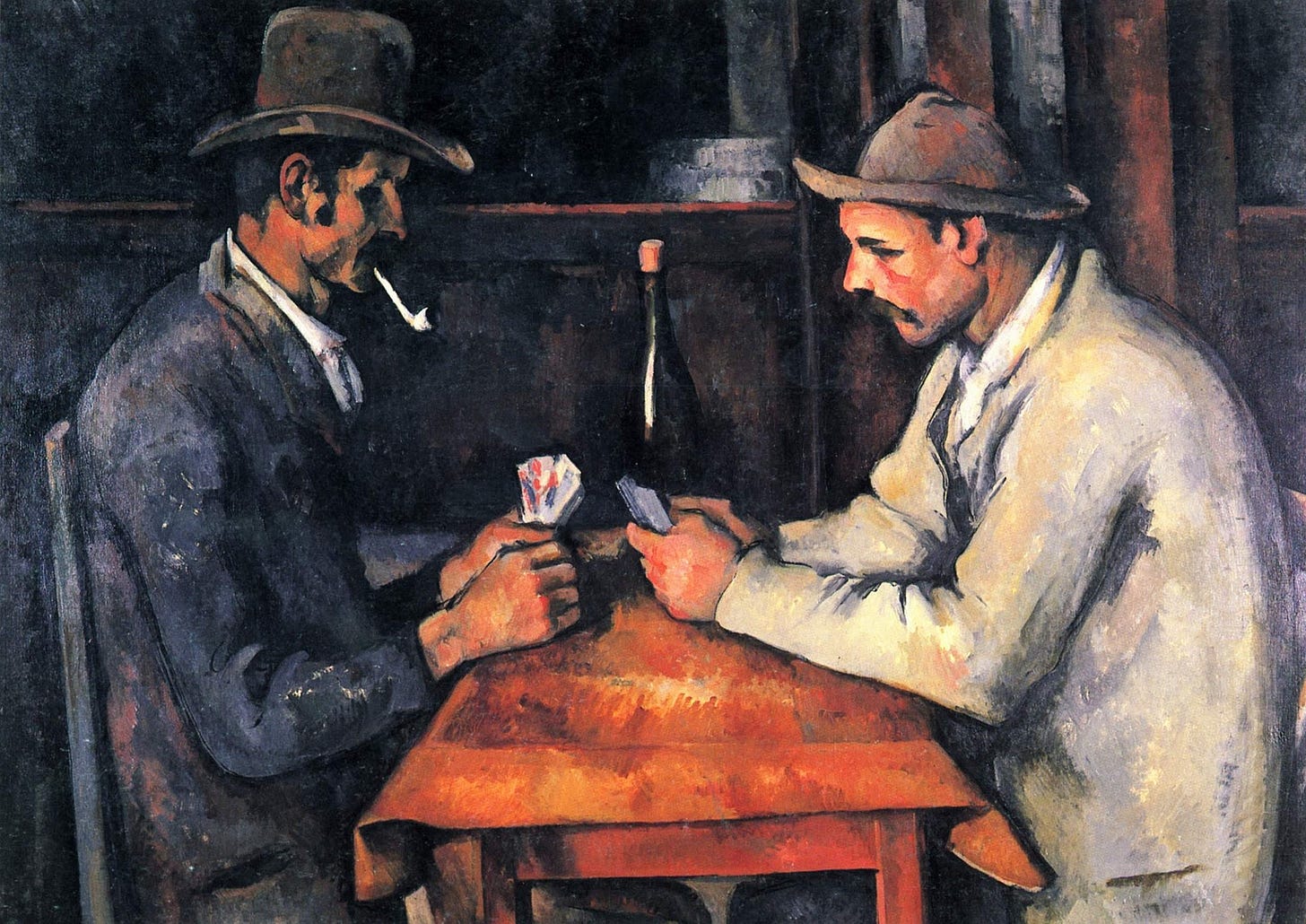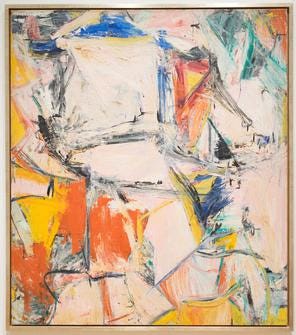$210 million for a Gauguin... $250 million for a Cézanne... $450 million for a da Vinci...
... and $550 million for... a Dog Coin?
We’ll come back to the wacky world of high art and higher finance in a moment. First though, an update from the road...
The Mid-Air Pivot
Faithful readers will recall that, a couple of weeks ago, your editor found himself stranded in No Man’s Land while en route to Houston, Texas from Athens, Greece. Due to some COVID-19-related administrative cock-up, our entry visa had suddenly “disappeared,” leaving us literally hanging in mid air.
Troubleshooting at 36,000ft over the Atlantic Ocean, Wife Anya suggested that, if worse came to worst (plane crashes not included), we could always skip over the border and hang out down Mexico way for a while... at least until the visa situation was resolved.
One mediocre movie and a few mini red wine bottles later and we were adoze, dreaming of flour white sandy beaches, al pastor tacos and blood orange Pacific sunsets...
And so, when we were eventually granted permission to enter the U.S., courtesy of the chipper folks at Dulles Airport Secondary Processing, it was somewhat anticlimactic. No dramatic border runs necessary. No Mission Impossible soundtrack. No eleventh hour pivots or Plan B adventures.
What to do? Once again, Wife Anya proved the voice of reason...
“You don’t need to be kicked out of one country to justify traveling to another, you know. We could just... go.”
And so here we are, a fortnight later, celebrating Mexican Independence Day with dear friends in the capital. One never knows quite what’s in store...
The Eye of the Beholder
But let us return to the subject at hand... that of money, art and whence cometh value. We’ll approach the subject the way we travel... that is to say, circuitously and with little assurance that we’ll arrive at the ticketed destination at all.
We begin with a basic precept, so simple it is almost universally misunderstood: Value is subjective.
That is to say, just as beauty is in the eye of the beholder... and offense in the ear of the listener... so too does value depend on human experience.
Ludwig von Mises, the great Austrian economist, was on the case when he observed that value was not determined by the nature of objects themselves, as existing in some kind of tree-falling-in-the-woods vacuum, but through our interactions with and subjective appreciation for them. The extent to which we find them useful in achieving our desired ends in a given moment, in other words.
“Value is not intrinsic, it is not in things,” Mises argued in Human Action. “It is within us; it is the way in which man reacts to the conditions of his environment.”
And therein lies the X-factor... the Deus ex Machina... or, perhaps more aptly, the Wild Card, the Joker in the Pack...
...Man!
Hubristic, folly-prone, own-tail-chasing, man. As long as perceived value depends on the whims and caprices of man it is, almost by definition, bound to be irrational.
Which may help to explain the apparent mania gripping the market for digital artwork in the form of non-fungible tokens (NFTs).
Seasoned investors and market veterans alike have had their chins in slings this past month, as the market capitalization for NFTs seemingly defied every rational explanation. To cite just one story...
Top dog in the NFT pack - the DOG Coin - set a new record just last week, after the NFT, which was purchased for a “mere” $4 million waaaay back in early June, was fractionalized into nearly 17 billion $DOG tokens, 20% of which were snapped up for 11,000 ETH, or about $45 million, bringing the total value of the DOG Coin to... wait for it...
...$225 million!
Just to be clear (and so readers don’t think we are losing our marbles) that’s almost a quarter of a billion dollars to (collectively) own a unique pointer on the Internet which directs to an image of a dog.
Oh, and the price doubled within 24 hours... to a cool $550 million.
How does that rank, historically? And could it possibly be worth more than the Savior of the World?
Accounting for Taste
Consider the Top 5 most expensive paintings ever sold, shown here in reverse order, least to most expensive. (We have included some additional details so as to make tangential remarks a bit further on...)
5. Number 17A by Jackson Pollock, 1948, oil on fiberboard, 112 x 86.5 cm. Sold in 2015 for ~$200M
4. Paul Gauguin, Nafea Faa Ipoipo? (When Will You Marry?) 1892, oil on canvas, 101 x 77 cm. Sold in 2014 for $210M.
3. Les Joueurs de cartes (The Card Players), Paul Cézanne, 1894-95, oil on canvas, 47.5 × 57 cm. Sold in 2011 for $250M.
2. Interchange by Willem de Kooning, 1955, oil on canvas, 200.7cm by 175.3. Sold in 2015 for ~$300M.
1. Salvator Mundi (Savior of the World), Leonardo da Vinci, 1499-1510, oil on walnut panel, 45.4 cm × 65.6. Sold in 2017 for $450M.
[NB - It is perhaps worth noting here that ALL of the Top 10 paintings on this list were sold within the past decade, giving some indication as to the Niagara of liquidity looking for a safe haven during this worldwide fiat flood...]
Now, by what objective metric might one fairly value these pieces?
By scarcity? Each original above is a “one of a kind” piece... but so are millions of others which didn’t make the list. That hardly helps us.
Besides, there are copies on copies on copies of all the most famous works in the world. Take a walk along the banks of the Seine. Anyone would think the Louvre would be empty, given all the masterful reproductions up for hock on any given afternoon. And yet, this fact hardly seems to diminish the value of the originals. If anything, these reproductions only heighten the near-mystical allure of the genuine articles.
(It’s the same reason Louis Vuitton and Gucci don’t really care that the plazas and bazaars of Shanghai are flooded with their cheap knock-offs... nobody who spends $50k on a Birkin bag was ever going to buy a street stall fake, and vice-versa. In the end, it’s just brand recognition and free advertising.)
What’s more, Jackson Pollock’s pieces become scarcer by the day. As a man committed to his bottle as well as his brushes, the absent-minded artist regularly failed to properly treat his canvases, thereby condemning them to certain ruin, like a sinking Venetian apartment. Does this mean they should then command a “limited time only” premium... or are they more like fast-depreciating options contracts, suffering from terminal time decay until they eventually expire worthless?
There appears to be no rhyme, no reason... no rationale. Only perception. Only subjective value.
How about raw materials, then? Don’t they come with some “intrinsic value”?
Let’s see... Gauguin’s piece is roughly two-thirds larger than Cézanne’s. Both are acclaimed post-impressionists. Both Frenchmen. Both painted around the same time and with the same materials; oil on canvas. Should the former be worth two-thirds more than the latter?
Hmm...
Say we focus on pure aesthetic achievement, attempting to stare through the “eye of the beholder.” What do we see?
Your editor has no particular beef with Mr. Kooning... but who among us can really tell a masterpiece of abstract expressionism from a 6 year-old’s spilled breakfast?
And yet, modernist marvels are all the rage among the highest priced pieces ever sold. We checked the Top 100 Most Expensive List and discovered plenty of Warhols, Rothkos and Bacons...
And yet, there was not a single Caravaggio to be found... not one Velázquez... nary a John Singer-Sargent, a Johannes Vermeer, a Jan van Eyck...
As you see, Dear Reader, whether fishing for JPEGS in the cyber soup or canvassing the archive under the Christie’s auction hammer, there’s simply no accounting for taste.
But then, who are we to argue? We’re just one irrational being among many...
Until next week,
Cheers,
Joel Bowman
La Condesa, Mexico City ~ September, 2021








